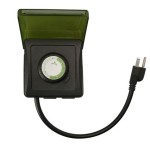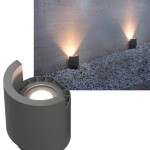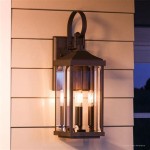Outdoor Photography Lighting Tips
Mastering light is paramount to capturing compelling outdoor photographs. Natural light, while often beautiful, is seldom constant and presents a myriad of challenges. Understanding how to manipulate and work with available light is crucial for achieving desired results in various outdoor photography genres, from landscape and wildlife to portraiture and street photography. This article explores key lighting considerations and techniques to enhance your outdoor photography.
Understanding Natural Light Characteristics
Natural light varies greatly depending on the time of day, weather conditions, and geographical location. Recognizing these variations allows photographers to predict and adapt to specific lighting scenarios.
Time of Day: The quality of light is significantly affected by the sun's position. Early morning and late afternoon, often referred to as the "golden hours," provide warm, soft light with long shadows, adding depth and dimension to images. Midday sun, however, is typically harsh and direct, often resulting in overexposed highlights and deep shadows. This can be mitigated with strategic positioning or by utilizing light modifiers.
Weather Conditions: Overcast days produce diffused light, which minimizes shadows and creates a more even illumination. This is ideal for portrait photography and subjects with intricate details. Sunny days offer strong contrast and saturated colors, while foggy or misty conditions create a soft, ethereal atmosphere. Rain can add drama and reflections, presenting unique photographic opportunities.
Geographical Location: Proximity to the equator results in more intense sunlight, while higher latitudes experience longer periods of soft light, particularly during summer months. Mountainous regions can create dramatic shadows and dynamic lighting conditions due to the varied terrain.
Utilizing Light Modifiers and Reflectors
While natural light is the primary source in outdoor photography, supplemental tools can enhance and control the light, improving the overall image quality. Light modifiers, such as reflectors and diffusers, are essential for manipulating the available light to achieve specific effects.
Reflectors: Reflectors redirect existing light onto the subject, filling in shadows and adding brightness. They come in various colors, each offering a different effect. White reflectors provide a neutral, soft light, while silver reflectors offer a brighter, more specular light. Gold reflectors add warmth to the subject, and black reflectors can be used to block light and create deeper shadows. Reflectors are particularly useful for portrait photography, adding catchlights in the eyes and softening harsh shadows on the face.
Diffusers: Diffusers soften and spread light, reducing contrast and creating a more even illumination. They are often used to soften harsh sunlight on sunny days, preventing blown-out highlights and deep shadows. Diffusers are particularly useful for photographing subjects with delicate details or when a softer, more flattering light is desired. They can be placed between the sun and the subject or used to diffuse direct sunlight falling on a scene.
Fill Flash: While primarily for indoor use, a flash can be useful outdoors. Using fill flash can help balance the exposure in backlit situations, such as when shooting a subject against a bright sky. The flash fills in the shadows on the subject, preventing them from being underexposed. It should be used subtly to maintain a natural look and avoid overpowering the ambient light. Modern flash units often offer TTL (Through-The-Lens) metering, which automatically adjusts the flash output based on the scene's lighting conditions.
Composition and Light Direction
The direction of light plays a crucial role in shaping the mood and impact of an image. Understanding how light interacts with the subject is essential for effective composition and storytelling.
Front Lighting: Front lighting, where the light source is behind the photographer, illuminates the subject directly, minimizing shadows and creating a flat, even appearance. While it can be useful for capturing detail and color, it can sometimes lack depth and dimension. Front lighting is best suited for subjects that already possess strong visual elements and don't require significant shadowing to enhance their form.
Side Lighting: Side lighting, where the light source is to the side of the subject, creates strong shadows and highlights, emphasizing texture and form. It can add drama and depth to images, particularly in landscape and architectural photography. The angle of the side light can be adjusted to control the intensity and direction of the shadows, allowing for creative expression. Side lighting is effective for revealing intricate details and creating a sense of three-dimensionality.
Backlighting: Backlighting, where the light source is behind the subject, creates silhouettes and highlights the edges of the subject. It can be challenging to expose correctly, as the camera may struggle to balance the bright background with the darker foreground. However, backlighting can create stunning effects, such as rim lighting, which highlights the subject's outline, or silhouettes, which emphasize the subject's shape against a bright background. Proper exposure compensation is crucial when shooting in backlit conditions to avoid underexposing the foreground.
Working with Shadows: Shadows are an integral part of light and can be used creatively to add depth, texture, and drama to images. Understanding how shadows interact with the subject and the surrounding environment is crucial for effective composition. Experiment with different angles and perspectives to manipulate the shadows and create interesting patterns. Shadows can be used to lead the eye, create a sense of mystery, or emphasize the subject's form.
Shooting in Different Weather Conditions
Outdoor photography is inherently subject to weather conditions. Embracing and adapting to different weather scenarios can lead to unique and compelling images. Each type of weather offers distinct opportunities and challenges that photographers can leverage to their advantage.
Sunny Days: Sunny days provide vibrant colors and strong contrast but can also result in harsh shadows and blown-out highlights. To mitigate these issues, consider shooting during the golden hours when the light is softer and warmer. Alternatively, use reflectors and diffusers to manipulate the light and soften the shadows. Polarizing filters can also be used to reduce glare and enhance colors.
Overcast Days: Overcast days offer diffused light, which is ideal for portrait photography and subjects with delicate details. The even illumination minimizes shadows and creates a smooth, flattering light. Overcast days are also well-suited for photographing landscapes, as the soft light enhances colors and reduces contrast, revealing subtle details that might be lost in direct sunlight.
Rainy Days: Rainy days can create dramatic and atmospheric images. The reflections on wet surfaces can add depth and interest to the scene, while the rain itself can create a sense of movement and dynamism. Protect your camera from the rain with a waterproof cover or umbrella. Look for opportunities to capture reflections in puddles or to photograph subjects in the rain. Raindrops on flowers or leaves can create beautiful and unique compositions.
Foggy/Misty Days: Fog and mist create a soft, ethereal atmosphere, reducing contrast and emphasizing silhouettes. These conditions are ideal for creating a sense of mystery and isolation. Focus on strong shapes and forms that stand out against the background. Use a telephoto lens to compress the scene and emphasize the layers of fog or mist. Overexpose slightly to brighten the image and enhance the ethereal effect.
Exposure Compensation and Metering Modes
Proper exposure is critical for capturing well-lit and balanced images. Understanding how to use exposure compensation and different metering modes is essential for achieving accurate exposures in various lighting conditions.
Exposure Compensation: Exposure compensation allows you to override the camera's automatic metering system and adjust the exposure manually. This is particularly useful when shooting in challenging lighting conditions, such as backlit scenes or when photographing subjects with high contrast. By dialing in positive exposure compensation, you can brighten the image, while negative exposure compensation darkens it. Experiment with different exposure compensation settings to achieve the desired result.
Metering Modes: Cameras offer various metering modes, each of which measures the light differently. Evaluative (or Matrix) metering analyzes the entire scene and calculates an average exposure. Center-weighted metering focuses on the center of the frame, while spot metering measures the light in a small area. The choice of metering mode depends on the specific scene and the desired effect. For example, spot metering is useful for accurately exposing a subject that is significantly brighter or darker than the surrounding environment.
Histogram Analysis: The histogram is a graphical representation of the tonal range in an image. It shows the distribution of pixels from black to white. Analyzing the histogram can help you determine if the image is properly exposed. A histogram that is skewed to the left indicates underexposure, while a histogram skewed to the right indicates overexposure. Ideally, the histogram should be balanced, with pixels distributed evenly across the tonal range. Using the histogram in conjunction with the camera's LCD screen can help you achieve accurate exposures in challenging lighting conditions.
By understanding and implementing these outdoor photography lighting tips, photographers can significantly enhance their ability to capture stunning and compelling images in a variety of outdoor settings. The key is to practice and experiment, learning how light interacts with different subjects and environments.

Essential Lighting Tips For Outdoor Photography Lessons Skills

The Best Lighting Tips For Outdoor Photography Cool

11 Outdoor Portrait Photography Tips For Easy Shots

11 Outdoor Portrait Photography Tips For Easy Shots

Professional S Guide To Landscape Lighting Photography

Pin By David Casimer On Photography Ideas Lighting Setup Portrait Studio

My Top 3 Outdoor Photography Lighting Tips Christi Johnson Creative

Outdoor Photography Bts Using One Light Settings Posing Lighting Tips Canon 6d Ad600bm

11 Outdoor Portrait Photography Tips For Easy Shots

Tips For Great Outdoor Photography Results Naldz Graphics
Related Posts







